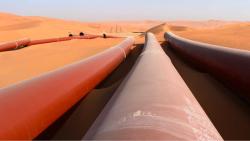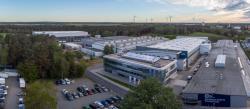
OR WAIT null SECS
© 2024 MJH Life Sciences™ and Turbomachinery Magazine. All rights reserved.
Causes and effects of gas turbine degradation
The mechanisms that cause engine degradation are changes in blade surfaces due to erosion or fouling, and the effect on the blade aerodynamics; changes in seal geometries and clearances, and the effect on parasitic flows, changes in the combustion system (e.g. which result in different pattern factors).
This article contains excerpts from the paper, “Gas turbine performance and maintenance”, presented at the 2018 Asia Turbomachinery Symposium by Rainer Kurz of Solar Turbines and Klaus Brun who is now with Elliott Turbomachinery.
The function of a gas turbine is the result of the fine-tuned cooperation of many different components. Any of these parts can show wear and tear over the lifetime of the package, and thus can adversely affect the operation of the system. In particular the aerodynamic components, such as the engine compressor, the turbines, the driven pump, or compressor have to operate in an environment that will invariably degrade their performance.
The understanding of the mechanisms that cause degradation as well as the effects that the degradation of certain components can have on the overall system are a matter of interest. Several mechanisms cause the degradation of engines: Fouling is caused by the adherence of particles to airfoils and annulus surfaces. The adherence is caused by oil or water mists. The result is a build-up of material that causes increased surface roughness and to some degree changes the shape of the airfoil (if the material build up forms thicker layers of deposits). Many of the contaminants are smaller than 2 μm.
Fouling can normally eliminated by cleaning. Hot corrosion is the loss of material from flow path components caused by chemical reactions between the component and certain contaminants, such as salts, mineral acids or reactive gases. The products of these chemical reactions may adhere to the aero components as scale. High temperature oxidation, on the other hand, is the chemical reaction between the components metal atoms and oxygen from the surrounding hot gaseous environment. The protection through an oxide scale will in turn be reduced by any mechanical damage such as cracking or spalling, for example during thermal cycles.
Erosion is the abrasive removal of material from the flow path by hard particles impinging on flow surfaces. These particles typically have to be larger than 20 μm in diameter to cause erosion by impact. Erosion is probably more a problem for aircraft engine applications, because state of the art filtration systems used for industrial applications will typically eliminate the bulk of the larger particles. Erosion can also become a problem for driven compressors or pumps where the process gas or fluid carries solid materials.
Damage is often caused by large foreign objects striking the flow path components. These objects may enter the engine with the inlet air, or the gas compressor with the gas stream, or are the result of broken off pieces of the engine itself. Pieces of ice breaking off the inlet, or carbon build up breaking off from fuel nozzles can also cause damage. Abrasion is caused when a rotating surface rubs on a stationary surface.
Many engines use abradable surfaces, where a certain amount of rubbing is allowed during the run-in of the engine, in order to establish proper clearances. The material removal will typically increase seal or tip gaps. While some of these effects can be reversed by cleaning or washing the engine, others require the adjustment, repair, or replacement of components. It should be noted, that the determination of the exact amount of performance degradation in the field is rather difficult.
Test uncertainties are typically significant, especially if package instrumentation as opposed to a calibrated test facility is used. Even trending involves significant uncertainties, because in all cases the engine performance has to be corrected from datum conditions to a reference condition. Three major effects determine the performance deterioration of the compressor: Increased tip clearances· Changes in airfoil geometry· Changes in airfoil surface quality· While the first two effects typically lead to non-recoverable degradation, the latter effect can at least be partially reversed by washing the compressor.
The overall effect of degradation on an engine compressor yields added losses and lower capability of generating head. Typically, a degraded compressor also will have a reduced surge or stall margin. This will not have any significant effect on the steady state operation, as long as other effects that lower the stall margin (such as water or steam injection) are avoided. For a given speed of a degraded compressor, each subsequent stage will see lower Mach numbers (because of the higher temperature) and an increased axial velocity component (because ρ= p/RT, where p is reduced, T is increased, thus the density gets reduced). The net effect will be that while in the new machine, all stages were working at their optimum efficiency point at design surge margins. The degradation will force all stages after the first one to work at off-optimum surge margins and lower than design efficiency. This will not only lower the overall efficiency and the pressure ratio that can be achieved, but also the operating range.
Calculations for a typical axial compressor reveal that the combined effects of airfoil fouling and increased clearances lead to loss of pressure ratio, loss of efficiency and loss of range or stall margin. In particular the increased clearances cause choke at lower flow.



